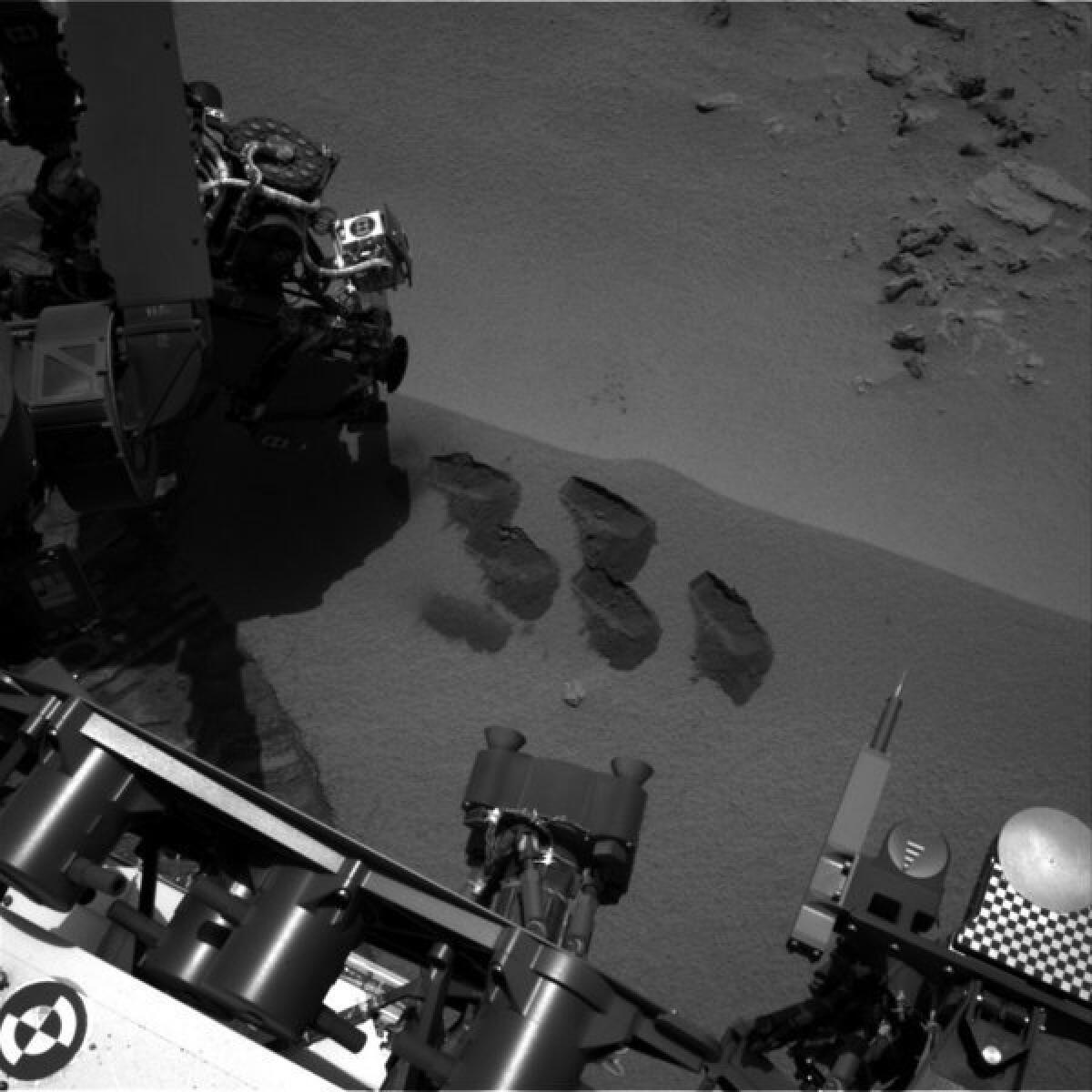NASA Mars Curiosity rover may have caught dust devils in action

- Share via
NASA’s Curiosity rover has felt what appear to be dust devils pass by as it samples the Martian atmosphere, mission scientists said Thursday.
Though the Mars Science Laboratory rover has yet to catch the whirlwinds on camera, its Rover Environmental Monitoring Station (REMS) has recorded pressure dips and wind shifts that often signal a vortex’s presence, said the Jet Propulsion Laboratory’s Manuel de la Torre Juarez, the instrument’s investigation scientist.
Curiosity has been photographing, laser-zapping and even eating rocks since its Aug. 5 landing in Gale Crater. It has spent some 40 Martian days in the Rocknest dune, where it scooped, sieved and sampled its first bits of soil on the Red Planet. Now its sensors are providing new information about how the air above those rocks behaves.
At roughly one-hundredth the density of Earth’s atmosphere, Mars’ envelope of air is too thin to protect against radiation from space, but it’s just thick enough to have wind and massive sandstorms, the scientists said. It’s also highly reactive to the sun’s heat, expanding during the day (lowering pressure) and shrinking at night (raising pressure), thus creating daily atmospheric tides. The pressure also rises as winter gives way to summer, when the polar ice caps begin to melt, releasing the once-frozen carbon dioxide into the air.
Curiosity’s landing spot wasn’t as flat as previous rover landing sites; the spacecraft’s innovative landing technology allowed scientists to choose a more challenging spot. All those ups and downs of terrain make it interesting to study how wind behaves in such terrain rather than on a plain, said Claire Newman of Ashima Research in Pasadena, a REMS instrument collaborator.
And the wind isn’t behaving quite as expected: Rather than seeing air flow up slopes during the day and down slopes during the night, the rover is picking up a strong current running through the ring made between the crater rim and the upward slope to Mount Sharp, the 3-mile-high mound in the middle of it. Understanding the winds may provide a clue as to how the strangely shaped Gale Crater formed.
Curiosity continues on its two-year mission toward Mount Sharp, where it will study whether the planet was ever hospitable to life. As Mars heads into springtime, the rover will chart how the atmosphere changes through the seasons. In the meantime, Curiosity will keep busy by using the other tools in its arsenal. It’s just about ready to break out its drill, said deputy project scientist Ashwin Vasavada, and set off for the next pit stop on Mars.
Follow me on Twitter @aminawrite.







